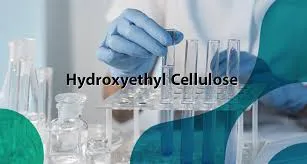
Nov . 04, 2024 19:04 Back to list
Exploring HPMC Chemical Properties and Applications in Modern Industries
HPMC A Versatile Chemical in Modern Applications
Hydroxypropyl Methylcellulose (HPMC) is a cellulose ether that has gained significant popularity across various industries due to its versatile properties and broad range of applications. As a non-ionic polymer, HPMC is derived from natural cellulose and modified through a chemical process to enhance its functionalities. This article explores the properties of HPMC, its manufacturing process, and its diverse applications in sectors such as construction, pharmaceuticals, food, and cosmetics.
One of the defining characteristics of HPMC is its ability to retain water, forming a gel-like consistency that is critical in various applications. This water retention capability makes it an effective thickener, binder, and film-forming agent. HPMC is also known for its excellent emulsifying and stabilizing properties. These features are especially important in industries that require stable emulsions, such as in the production of paints and coatings, where HPMC ensures an even distribution of components, preventing separation and settling.
HPMC A Versatile Chemical in Modern Applications
In the construction industry, HPMC is widely used as an additive in cementitious materials, such as mortars, grouts, and tile adhesives. Its ability to improve water retention enhances workability and adhesion, allowing for extended open times and reducing the risk of cracking or shrinkage during the curing process. Furthermore, HPMC contributes to the overall durability and performance of construction materials, which is essential in meeting the demanding standards of modern building practices.
hpmc chemical

In pharmaceuticals, HPMC is commonly used as an excipient in tablet formulations. Its role as a binder helps ensure that the active ingredients are uniformly distributed, while its controlled-release properties allow for the gradual release of medications into the bloodstream. This makes HPMC an invaluable component in the development of controlled-release drug formulations, improving patient compliance and therapeutic outcomes.
The food industry also benefits from the unique properties of HPMC. It acts as a thickening and stabilizing agent in various food products, such as sauces, dressings, and bakery items. HPMC improves texture and mouthfeel while maintaining moisture, ensuring that food products remain appealing and flavorful. Additionally, its safety and regulatory status make it suitable for use in food applications, aligning with consumer preferences for natural and clean-label ingredients.
HPMC's significance extends to cosmetics and personal care products, where it is utilized as a thickener, stabilizer, and film-forming agent in creams, lotions, and shampoos. Its ability to create smooth textures and improve product performance enhances the sensory experience for consumers. Moreover, HPMC is often favored in formulations aimed at sensitive skin due to its gentle nature and non-irritating properties.
In addition to these traditional applications, ongoing research is exploring new uses for HPMC, including biodegradable materials and sustainable practices. Its biocompatibility and non-toxic nature make it an attractive candidate for innovative applications in areas such as biomedical engineering and environmental sustainability.
In conclusion, Hydroxypropyl Methylcellulose (HPMC) is a multifaceted chemical compound with immense potential across various industries. Its unique properties allow it to perform critical functions in construction, pharmaceuticals, food, and cosmetics, making it an indispensable ingredient in many formulations. As industries continue to evolve and seek sustainable solutions, HPMC is poised to play an even more prominent role in shaping the future of material science and product development.
-
Versatile Hpmc Uses in Different Industries
NewsJun.19,2025
-
Redispersible Powder's Role in Enhancing Durability of Construction Products
NewsJun.19,2025
-
Hydroxyethyl Cellulose Applications Driving Green Industrial Processes
NewsJun.19,2025
-
Exploring Different Redispersible Polymer Powder
NewsJun.19,2025
-
Choosing the Right Mortar Bonding Agent
NewsJun.19,2025
-
Applications and Significance of China Hpmc in Modern Industries
NewsJun.19,2025







